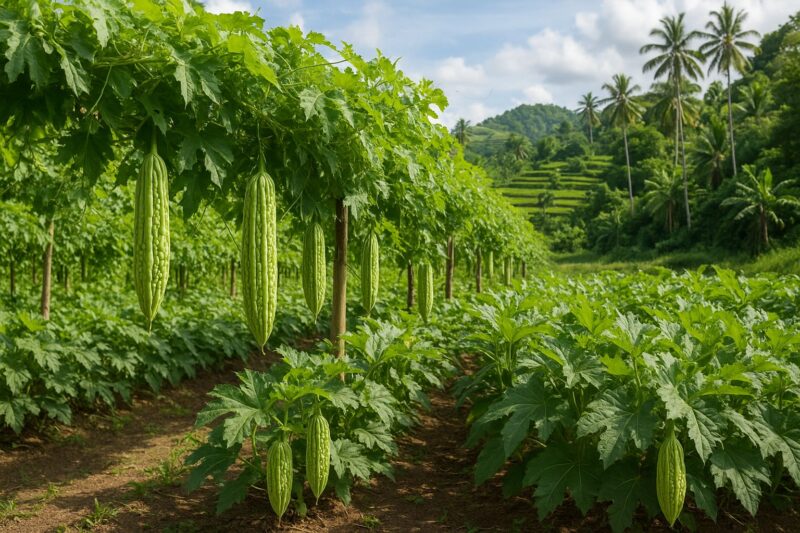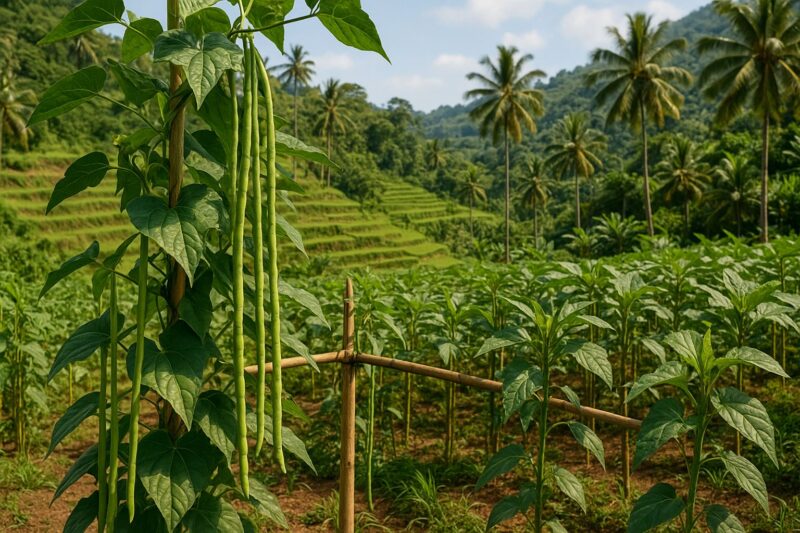Broccoli—while not traditionally Filipino—has in recent years found a niche in highland farms and even shaded lowland plots for its nutritious florets and crisp stems. From the cool terraces of Bukidnon to protected beds in Bulacan, you can harvest tender broccoli heads when you match variety, timing, soil, and care to local microclimates. After trialing broccoli under shade cloth in Bulacan and comparing notes with growers in Tagaytay and the Cordillera, I’ve distilled a method that consistently delivers firm, flavorful heads almost anywhere in the Philippines.
Variety Selection
Choose heat-tolerant, early-maturing hybrids for lowlands and classic long-season types for uplands. In Bulacan, I grow “Green Magic,” a 70-day hybrid bred to set heads before April’s heat spikes, and “Gypsy,” which tolerates warmer nights. Highland growers in Bukidnon favor “Imperial” and “Marathon” varieties for their large, tight heads and slow floret separation in misty conditions. Planting both kinds staggers your harvest window and hedges against unexpected weather.
Soil Preparation
Broccoli demands deep, fertile soil rich in organic matter with good drainage. I prepare raised beds 30 centimeters high, mixing equal parts homemade compost and garden loam, then incorporate two handfuls of rice hull charcoal per square meter to improve aeration. In heavier clay soils—common around Bulacan—I add coarse sand or crushed rice husks. Aim for pH 6.0–6.8; if your soil tests more acidic, a light application of dolomite lime balances it before planting.
Timing and Microclimate
Broccoli thrives when day temperatures stay between 18–24 °C and nights dip to 12–18 °C. In lowland plots, sow seeds in late November through January under 30–50 percent shade cloth to mimic cooler temperatures. In uplands—Baguio, Tagaytay—you can plant from October to December in open beds. In Bulacan, I start seedlings in December, transplant in January, and harvest heads by March—just before rains intensify.
Seedling Care and Transplanting
Start seeds in trays under shade cloth, maintaining even moisture. After 4–5 weeks—once seedlings have four true leaves—I harden them off by gradually exposing them to morning sun over a week. Transplant at 45 × 45–centimeter spacing in prepared beds, planting seedlings so the first true leaves sit just above the soil to encourage sturdy stems. Water in well, pressing soil gently around the root ball.
Watering and Mulching
Consistent moisture is vital during head formation but avoid waterlogging. I water early each morning—wetting soil 10–15 centimeters deep—then let the surface dry slightly by afternoon. Mulch with rice straw or dried leaves to conserve moisture, suppress weeds, and moderate soil temperature. In containers or elevated beds—common on rooftop gardens—I water daily in dry spells, checking soil by feel.
Feeding and Side-Dressing
At transplant, I work a teaspoon of bone meal into each hole for phosphorus. Four weeks later—when side shoots appear—I side-dress with decomposed chicken manure or compost tea along the rows to boost nitrogen and support head growth. A late sprinkle of wood ash adds potassium for tighter florets. Avoid heavy nitrogen applications late in the cycle to prevent soft, leafy heads.
Pest and Disease Management
Broccoli can attract cabbage loopers, aphids, and flea beetles. Hand-pick caterpillars and apply a mild neem oil spray to control insects while preserving beneficials. Floating row covers during the first four weeks prevent flea beetle damage. To stave off downy mildew, ensure adequate row spacing for air circulation and prune any yellowing leaves promptly. Rotate brassica beds annually to break pest and disease cycles.
Harvesting
Harvest main heads 70–90 days after transplanting, before the first side shoots elongate into flowers. Cut heads with a sharp knife, leaving 10 centimeters of stem so side shoots develop into smaller secondary heads. Frequent harvesting of side florets—every 5–7 days—extends your yield into the warmer months.
Case Study
In Tagaytay, a cooperative uses shade houses and drip irrigation to grow broccoli through March—a period when lowland farms struggle with heat. They achieved two harvests per season and sold heads at premium prices in Manila, illustrating how simple microclimate control and precise watering can expand production windows.
Final Thoughts
Broccoli may demand more attention than tropical staples, but its crisp, flavorful heads—rich in vitamins and minerals—make the extra care worthwhile. From upland terraces to shaded backyard beds, mastering variety choice, soil health, timing, moisture management, feeding, and pest checks yields bountiful broccoli harvests season after season.
I’m open for consulting and speaking opportunities on sustainable vegetable production nationwide. Let’s grow together.
#Broccoli #Repolyo #VegetableFarming #PhilippineAgriculture #SustainableFarming #HomeGarden #ConsultingAvailable #SpeakingOpportunities




